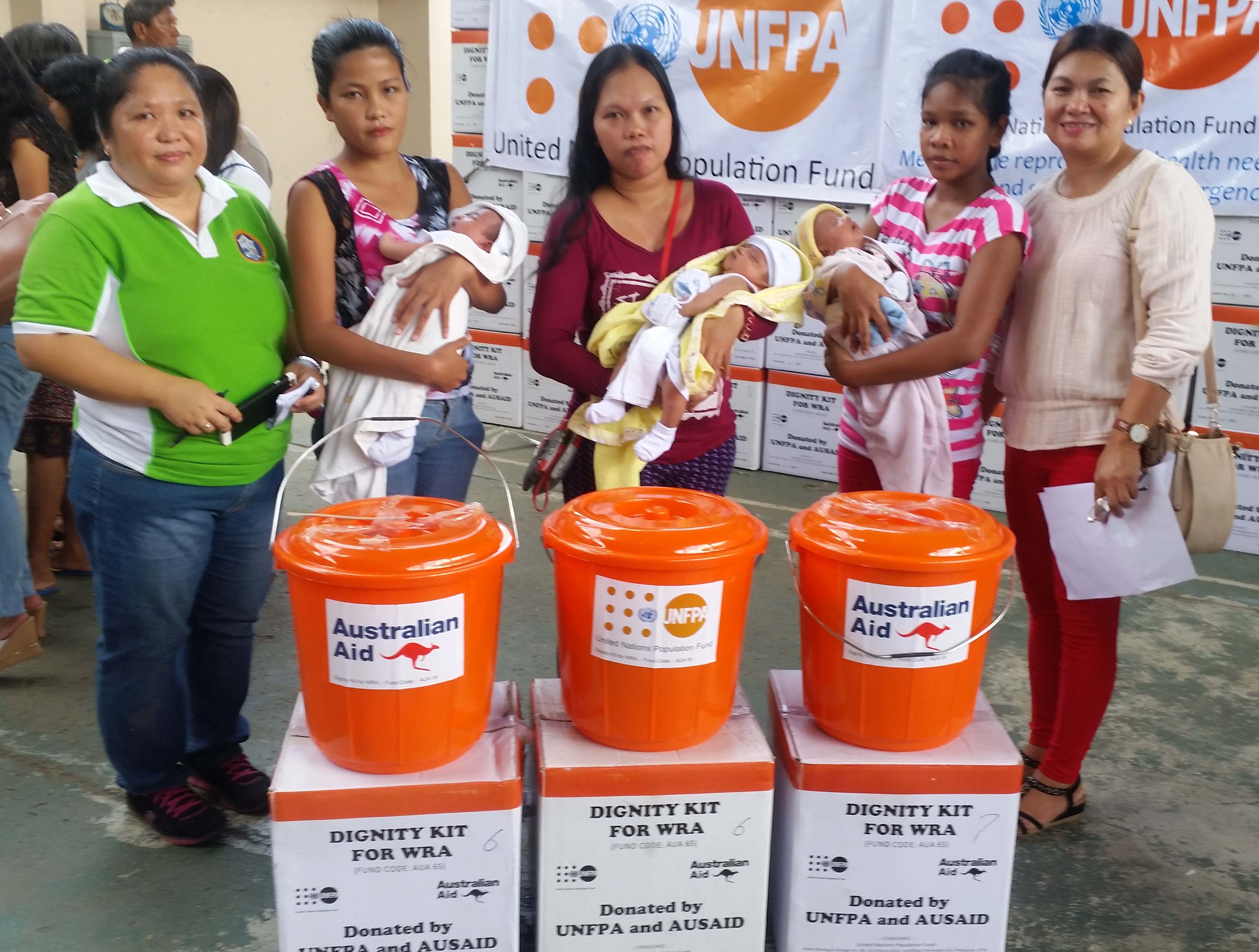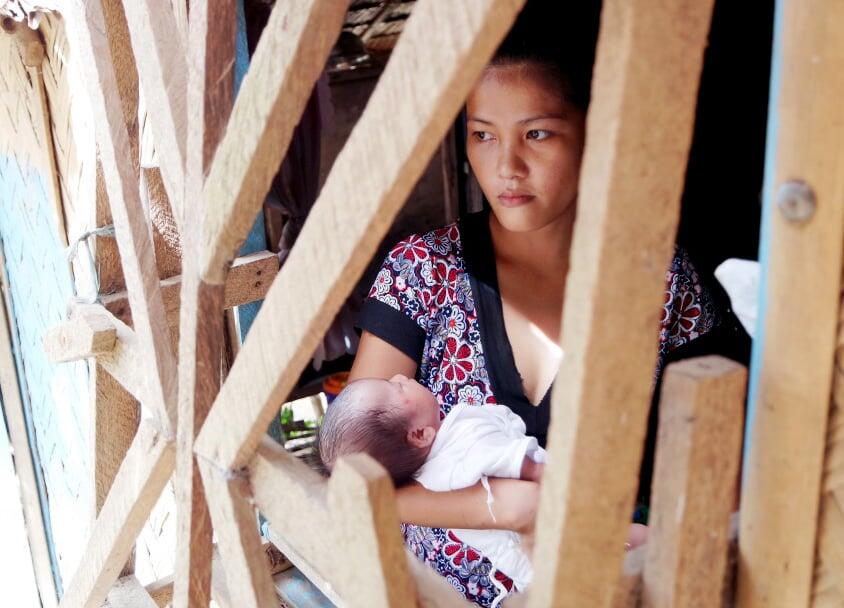Darlene Niña Amar of Catarman, Northern Samar cannot look back to the day her two children were born without recalling the horrid events that went along with them. On both occasions, she and her newborns survived major natural disasters.
Last 14 December, 24-year-old Darlene gave birth at home in Barangay Old Rizal in the municipality of Catarman in Northern Samar as Typhoon Melor (locally known as Nona), with an equivalent strength of a Category 4 typhoon, made landfall over the province.
Darlene was already experiencing contractions early that day and was just waiting for her husband to come home so they can go to the nearest birthing facility, which is a 15-minute tricycle ride from their house. By noon, however, the wind began to pick up strength and there was heavy downpour, making it impossible for them to get a tricycle.
They stayed home, hoping the wind and rain would soon subside so they can go to the health center. The typhoon, however, did not relent and battered even their house, tearing a part of the wall on the second floor. Darlene’s mother-in-law and sister-in-law scrambled to drain the rainwater that flowed into their house from the torn wall. As everyone dealt with the chaos, Darlene tried her best to keep calm as she lay on the floor while her labour pains grew intense.
But childbirth happens even at the most precarious situation and not even Darlene’s attempt to remain calm could delay it. At around 3 p.m., her new baby – a girl – came out. Fortunately, Darlene was surrounded by family who assisted her, although everyone was terrified at the situation.
“My sister-in-law grabbed a towel to wrap my baby and my husband ran out of the house to get a midwife who cut the baby’s umbilical cord with a pair of scissors. My baby and I got wet from the water dripping from the ceiling,” Darlene narrated as UNFPA staff visited her in her house.
Giving birth in an emergency setting is nothing new to Darlene. Three years ago, she was just discharged from a birthing center a day after she delivered her first child when the 7.6-magnitude earthquake struck the Samar island in central Philippines on 31 August 2012. Luckily, the mother and child were moved to a safer ground unscathed.

Looking back at both childbirth experiences, Darlene recognizes the importance of having a birthing facility and skilled birth attendant at the time of delivery, especially during an emergency. “It is much better at the health center because the medical staff know what to do. The facility is also clean and there are medical equipment and supplies that they can use for safe deliveries,” she said.
But childbirth happens even at the most precarious situation and not even Darlene’s attempt to remain calm could delay it. At around 3 p.m., her new baby – a girl – came out. Fortunately, Darlene was surrounded by family who assisted her, although everyone was terrified at the situation.
“My sister-in-law grabbed a towel to wrap my baby and my husband ran out of the house to get a midwife who cut the baby’s umbilical cord with a pair of scissors. My baby and I got wet from the water dripping from the ceiling,” Darlene narrated as UNFPA staff visited her in her house.
Giving birth in an emergency setting is nothing new to Darlene. Three years ago, she was just discharged from a birthing center a day after she delivered her first child when the 7.6-magnitude earthquake struck the Samar island in central Philippines on 31 August 2012. Luckily, the mother and child were moved to a safer ground unscathed.
Looking back at both childbirth experiences, Darlene recognizes the importance of having a birthing facility and skilled birth attendant at the time of delivery, especially during an emergency. “It is much better at the health center because the medical staff know what to do. The facility is also clean and there are medical equipment and supplies that they can use for safe deliveries,” she said.


